Light Management in Breeder: know more…
- Birds ‘reproductive cycle is controlled by changes in day length called as Photoperiod.
- Birds perceive this photoperiod in two ways:
- a) Through retinal of the eye to visual cortex and pituitary gland
- b) Through harderian gland (UVA specific light) which triggers reproductive system
- Birds are not “stimulated” by the entire period of light, but rather by two important parts of this period. Birds are sensitive to the time of initial “Light-on“and subsequently during a period 11-13 hour later which is called the “Photosensitive Phase”.
- There are two type houses: a) Open-sided breeder houses (most common) and b) Dark-out breeder houses
- In open house system birds are subjected to three different light phases - namely light, dark and brown-out due to excessive light leakage through ventilation system.
- Brown-out is acceptable, if it is not greater than 10x the intensity of any true black-out period. If intensity of brown-out is more than it causes decline in production.
- In dark-out breeder houses; Biomitten program and Ahemeral cycle program has been followed.
- Minimum stimulatory day length is around 12 hours
- The intensity of the light period is always at least 10x greater than the intensity of the dark period.
- The natural pattern of light: darkness varies depending upon latitude, season and pollution.
- A thumb rule with breeders is to ensure hens are at least 2.1kg and 20 weeks of age before light stimulation.
- Over time, breeders become photorefractory to light, meaning that the endocrine system becomes less active, and output of gonadotrophins from the Many indigenous herbs proven to improve egg production and semen quality in aged flock by stimulating the hypothalamic-pituitary axis. Egmax & Hatch Up from Natural Remedies Pvt Ltd are proven for abnormal production loss due to geriatric phenomenon.
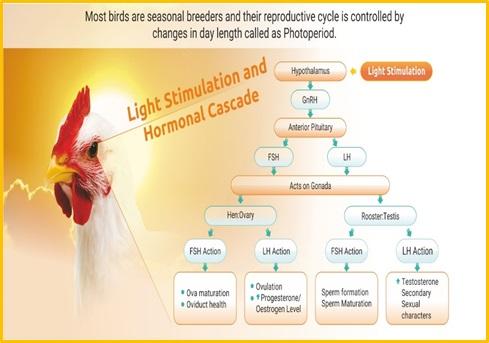

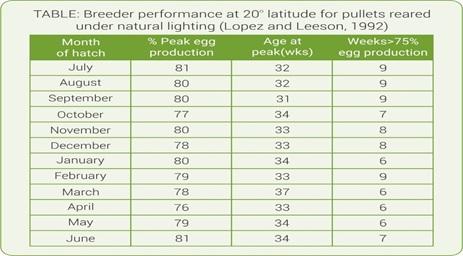
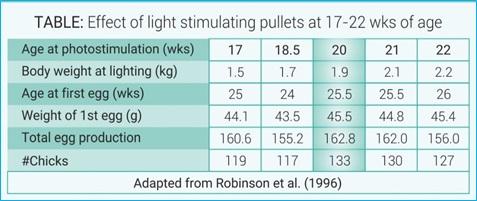
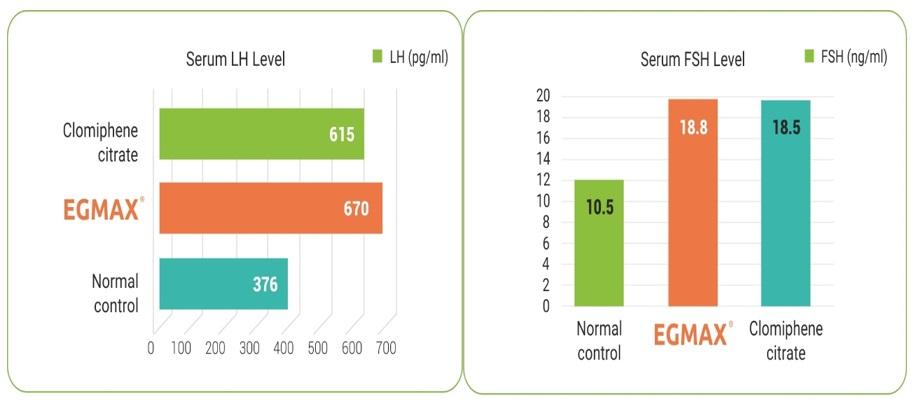
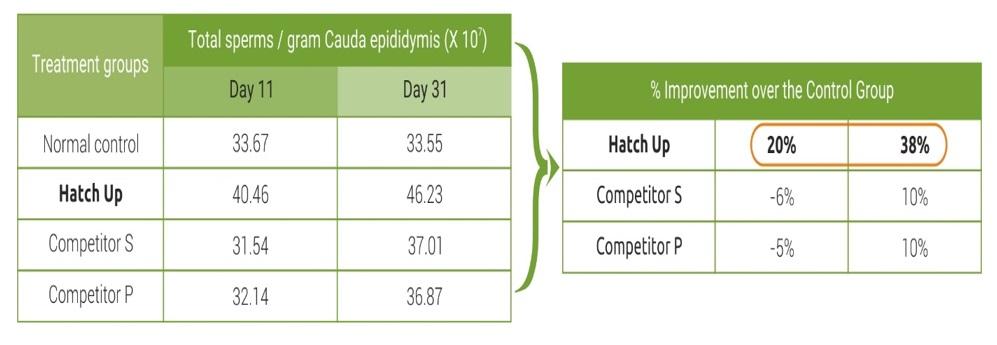
Dr. Robert Renema, thank you very much for your comment.
I totally agree with your initial assessment and even more, how well you, Dr. Robinson and other researchers at your University have published several times, in this stage of the photostimulus, we're doing an ovarian management where the feeding must be very tight and especially post photostimulation to avoid deaths associated with ovarian overstimulation.
For this reason, feed increases are conservative after photostimulus. And it is what I do in the management of parental flocks with my advisors to avoid mortality, considering that in full peak 0.25 / 0.30% weekly mortality would be the most I want to have.
My apologies but I do not finish to understand what you are referring to with your phrase .... I'm not saying increase feed, but instead I'm rethinking the size and timing of your feed increases (especially in uniform flocks!) .... Could you expand on that comment or send me information on where to read it more widely?
Thank you very much.
Roberto Ricagno
Dra Pooja Gautam, excellent article and also your contribution on LED lights and CLF.
Thanks for sharing.
I would like to consult you for an observation exposed in it.
I do not completely agree with the observation "A thumb rule with breeders is to ensure hens at least 2.1kg and 20 weeks of age before light stimulation", at least for certain genetic lines and for these last years and that is why I wanted see if I could give more information about it.
This data, correct, real and practical of the 90s can be referred to the practical experience and research of a few years ago, expressed by several researchers, as cited by Robinson, 1996, and also by many works of Dr. Lien regarding of photostimulation by age or weight and the realization among them.
Although I do not see it compatible today with certain genetic lines (example Cobb 500 SF) where the conditions to photostimulate a bird are closer to a weight of 2.4 kg and in age closer to 144-147 days and additional to it to a certain conformation of fleshing and fat reserves.
Being the latter one of the most difficult aspects to achieve with the genetic advance because the birds increasingly tend to deposit less fat (meat more lean) which complicates those who work with breeders.
Today we look for peaks of production closer to 88-90% and about 10-11 weeks over 80%, much higher than what was expressed in articles of the '90s.
Do you consider that the concept of 2.1 kg and 20 weeks should be reviewed at least for certain lines?
Greetings and many thanks.
Roberto Ricagno
This is very useful information for efficient breeder management.
My question is can this separation in three sizes i.e small, medium and big also benefit those in commercial production egg and meat?
I agree this is not always possible especially when the flocks are large. However, in developing countries broiler breeder producers may not be as large as those found in North America so dividing the barn and sorting of birds into small, medium and large birds with a small area for males is not difficult. When we started this program the farm was raising 15,000 broiler breeders, but divided between 5 barns of 3,000 birds per barn, so was feasible. We also used automatic feeders, but added a dummy hopper. The other alternative which would be nice is getting the hatcheries to separate the chicks into the three sizes by weight.
While I agree with what Dr. Renema is saying, my experience with broiler breeders, at least under tropical conditions was to divide the barn into 4 and separate the baby chicks as much as possible into small, medium and large chicks, with the 4th section reserved for extra males. We found prior to doing this, no matter what we did. When chicks were weighed weekly, underweight chicks were placed into the section with small birds and overweight into the section with large birds. Prior to doing this we always had poor uniformity.
Once we were able to successfully separate the chicks by weight; uniformity improved and mortality decreased. As far as feeding went, this was adjusted weekly and depending on how much I wanted the birds to be over under the standard weight determined whether feed was increased the next week or remained the same. This worked very well for our program which resulted in higher production rates and better quality chicks.
















.jpg&w=3840&q=75)